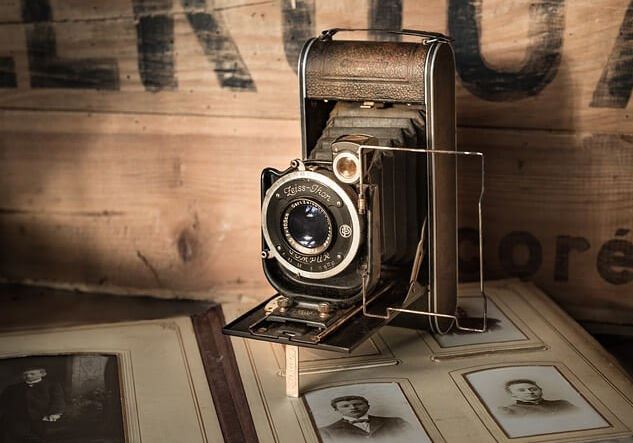The camera is a ubiquitous device that has revolutionized the way we capture and preserve moments in time. It allows us to freeze a fraction of a second and create lasting memories. But have you ever wondered who is responsible for this remarkable invention? In this article, we explore the history of the camera and the individuals who played a crucial role in its development.
Johann Zahn: Early Concept of the Camera
In the 17th century, a German monk named Johann Zahn conceptualized a device that resembled a camera. Although he did not build a functioning model, Zahn's design featured a box with a lens and a method to capture and retain the image. His work laid the foundation for future inventors to explore the possibilities of capturing images using optical principles.
Joseph Nicéphore Niépce: First Photograph
Joseph Nicéphore Niépce, a French inventor, is often credited with producing the first permanent photograph in the early 19th century. In 1826, he captured an image using a camera obscura and a bitumen-coated pewter plate. The exposure time required was several hours, but this groundbreaking achievement marked the beginning of photography as we know it today.
Louis Daguerre: Daguerreotype and Commercialization
Louis Daguerre, a French artist and inventor, collaborated with Niépce and developed the daguerreotype, an early photographic process. Daguerre's method involved exposing a silver-coated copper plate to light, creating a latent image that was later developed using mercury vapor. The resulting image was remarkably detailed and sharp. In 1839, the daguerreotype process was publicly announced and quickly gained popularity, leading to the commercialization of photography.
George Eastman: Introduction of Flexible Film
In the late 19th century, George Eastman, an American inventor and entrepreneur, made significant advancements in photography by introducing flexible film. Prior to Eastman's innovation, photographers used glass plates to capture images, which were cumbersome and limited in terms of portability. Eastman's flexible film roll made photography more accessible to the masses, leading to the founding of the Eastman Kodak Company in 1888.
Oskar Barnack: Birth of the 35mm Film Camera
Oskar Barnack, a German engineer, is renowned for his contribution to the development of the 35mm film camera. In the early 20th century, Barnack created the Ur-Leica, a compact camera that utilized 35mm cine film. This smaller format revolutionized photography by making cameras more portable and enabling photographers to capture a higher number of images before reloading.
The Evolution of Cameras: From Film to Digital
Since the early days of photography, cameras have undergone significant transformations. Advancements in technology have revolutionized the way we capture images, leading to the shift from film-based cameras to digital ones. Let's explore the major milestones in the evolution of cameras.
Digital Imaging: The Rise of Digital Cameras
In the late 20th century, digital imaging technology emerged, transforming the photography landscape. The first commercially available digital camera, the Dycam Model 1, was introduced in 1990. However, these early digital cameras had limited resolution and were quite expensive.
Over time, digital cameras became more affordable and technologically advanced. The development of CCD (charge-coupled device) and CMOS (complementary metal-oxide-semiconductor) sensors played a crucial role in improving image quality. These sensors converted light into digital signals, allowing photographers to instantly view and store images in electronic format.
Smartphones: The Camera in Your Pocket
With the advent of smartphones, cameras became more accessible than ever before. The integration of high-quality cameras into mobile devices brought photography to the masses. Smartphones offered convenience, ease of use, and instant sharing capabilities, making photography a ubiquitous part of our daily lives.
In recent years, smartphone cameras have seen remarkable advancements. Multiple lenses, larger sensors, and sophisticated image processing algorithms have enhanced the quality and versatility of smartphone photography. Today, many people rely primarily on their smartphones for capturing and sharing images.
Mirrorless Cameras: The Future of Photography?
In the early 21st century, mirrorless cameras entered the market, challenging the dominance of traditional DSLRs (digital single-lens reflex cameras). Unlike DSLRs, which employ a mirror and pentaprism system, mirrorless cameras use electronic viewfinders and display a real-time preview of the image.
Mirrorless cameras offer several advantages, including compactness, silent operation, and advanced autofocus capabilities. Their interchangeable lens systems provide versatility and flexibility for photographers of all levels. As technology continues to evolve, mirrorless cameras are becoming increasingly popular, indicating a potential shift in the industry.
The Rise of Artificial Intelligence (AI)
Artificial intelligence (AI) has also made its way into cameras, transforming the way we capture and process images. AI-powered cameras can automatically detect and optimize various aspects of a scene, such as exposure, focus, and white balance. Additionally, AI algorithms enable features like face detection, scene recognition, and automatic post-processing enhancements, simplifying the photographic process for users.
Conclusion
The camera has come a long way since its early conceptualization by Johann Zahn. From the pioneering efforts of Joseph Nicéphore Niépce and Louis Daguerre to the innovations of George Eastman and Oskar Barnack, each inventor played a significant role in shaping the evolution of photography. Today, cameras are found in various forms, from smartphones to professional DSLRs, allowing us to capture and share moments with ease. The journey of the camera continues as technology advances, enabling us to preserve and document our lives in ways unimaginable in the past.
More Camera Topics:
- When Was the Camera Invented?
- What is ISO in Photography
- Best Planetary and Lunar Cameras
- Astronomy Camera Color or Mono
- Mirrorless Camera vs DSLR
- Canon M50 Review
- Nikon D5600 Review
- Canon EOS R6 Review
- Best Lens for Astrophotography Canon
- Best Lens for Astrophotography Nikon
- Best Lens for Astrophotography Sony A7iii
- Best Lens for Astrophotography Fujifilm
- Best Lenses for Astrophotography
- Best Camera for Astrophotography
- Astrophotography Camera Settings

